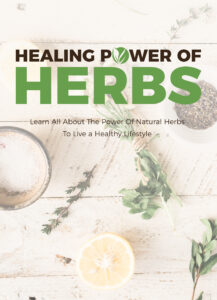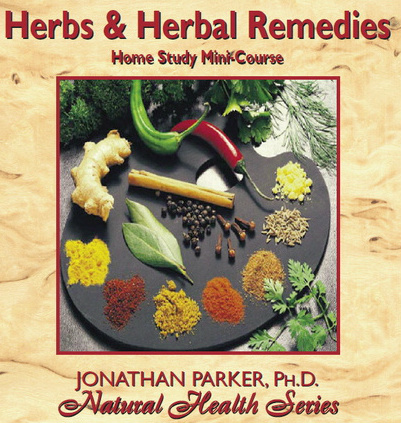Which Herbs to Plant Together for Healthy Growth

Before diving in, please note: This post is for informational purposes only. If you’d like to know more about how we approach topics, feel free to check out our friendly Disclaimer Page.
Hey there, amazing readers! 🖐️ Just a quick note: yes, we know there are a lot of ads here. Trust us, we get it—it’s not the prettiest look, but they help us keep this blog alive and kicking. Those pesky little ads cover the costs of all the behind-the-scenes magic, from hosting and tech stuff to creating content we hope you’ll love.
We’re committed to delivering quality posts, and your support (even just sticking around despite the ads) means everything to us. So, bear with us, and thanks for helping us keep the good vibes rolling. Now, on to the fun stuff! 😉
TRANSLATE BUTTON AT THE END OF THE ARTICLE
A Quick Overview
When it comes to gardening, planting herbs can be one of the most rewarding experiences.
Not only do they add flavor to our meals, but they also provide aromatic scents and beautiful greenery to our spaces.
However, as someone who has dabbled in herb gardening, I quickly learned that not all herbs thrive when planted next to each other.
This is where companion planting comes into play.
By understanding which herbs work well together, we can foster a healthy and thriving garden.
In this article, we’ll explore the magic of planting herbs in pairs or groups, their benefits, and practical tips for growing your own herb garden.
Introduction to Companion Planting for Herbs
Companion planting is an age-old practice that involves growing two or more plants together for mutual benefit.
For herbs, this means pairing them in ways that enhance their growth, flavor, and pest resistance.
Imagine your herb garden as a team of superheroes!
Each plant brings its unique strengths to the group, helping one another thrive in their shared space.
Not all herbs get along, though.
Some can inhibit growth or attract pests that can wreak havoc on their neighbors.
For example, plant basil next to tomatoes, and you create a dynamic duo that enhances flavor and wards off pests.
On the flip side, don’t plant mint too close to your other herbs; it can spread like wildfire and take over your garden!
By understanding the relationships between different herbs, we can create a harmonious garden.
This knowledge not only leads to healthier plants but also yields bountiful harvests.
It’s like hosting a dinner party where everyone gets along—everyone leaves happy!
Benefits of Planting Herbs Together in Your Garden
Planting herbs together offers a myriad of advantages.
Let’s dive into some of the most significant benefits I’ve discovered on my gardening journey:
Pest Control: Certain herbs can repel pests naturally.
For instance, marigolds planted alongside herbs can deter aphids and nematodes.
Improved Flavor: Some herbs boost the flavor profile of their companions.
Basil and tomatoes, for example, create a flavor explosion that’s hard to beat.
Maximizing Space: Companion planting allows us to make the most of limited garden space.
By layering plants with different growth heights, we can create a lush, thriving ecosystem.
Soil Health: Some herbs help improve soil quality by fixing nitrogen or adding organic matter when they decompose.
Attracting Beneficial Insects: Many herbs attract pollinators like bees and butterflies, which are crucial for a healthy garden.
Discover the "Healing Power of Herbs" 🌿

Microclimate Creation: Herbs can offer shade to their companions or protect them from harsh winds, creating a microclimate that encourages growth.
These benefits make companion planting a smart choice for any herb enthusiast.
As I’ve learned, enjoying a bountiful herb harvest is often about fostering relationships in the garden!
The Magic of Basil and Tomatoes: A Perfect Pair
Basil and tomatoes are like peanut butter and jelly—they just belong together!
Growing these two in close proximity creates a symbiotic relationship that boosts their flavors.
Basil is known to enhance the taste of tomatoes while repelling certain pests, such as aphids and whiteflies, that absolutely love tomatoes.
I remember the first time I planted them side by side.
The aroma of fresh basil wafting through my garden was intoxicating!
As the summer progressed, my tomato plants bore juicy red fruit, and I couldn’t help but pick fresh basil to toss in my pasta dishes.
Planting basil and tomatoes together isn’t just about flavor; it’s also practical.
Both plants thrive in similar conditions—warm, well-drained soil and plenty of sunlight.
Just be sure to give them enough space to breathe, as crowded plants can lead to mildew or other diseases.
If you haven’t tried this pairing yet, I highly recommend it.
You’ll be amazed at how they complement each other, much like a dynamic duo in a buddy cop movie!
Mint and Cabbage: A Flavorful Combination
Mint is another herb that pairs well in the garden, especially with cabbage.
While mint can be invasive if left unchecked, its strong scent acts as a deterrent for cabbage moths and other pests that love to munch on cabbage leaves.
When I first started growing cabbage, I had a tough time keeping pests away.
After I planted mint nearby, I noticed a significant drop in caterpillar activity.
It was a gardening miracle!
However, do keep mint in check.
I recommend planting it in a pot or using barriers to prevent it from spreading too much.
This way, you can enjoy its benefits without letting it take over your garden.
Plus, you can snip off fresh mint leaves for your tea or garnish!
Also, both plants enjoy similar growing conditions—a sunny spot and consistent moisture.
Just remember to give cabbage enough space to mature while keeping mint contained.
Rosemary and Thyme: A Mediterranean Dream Team
If you’re looking for a pairing that thrives in sunny spots and dry soil, rosemary and thyme are your go-to herbs.
These Mediterranean beauties complement each other beautifully in both flavor and growth.
Rosemary is a sturdy plant that can grow tall, casting a bit of shade for thyme, which prefers slightly less intense sunlight.
I love to grow these two together, and I often use them in my roasted vegetable dishes.
The fragrance of rosemary blends perfectly with the earthy notes of thyme, creating a harmonious flavor profile.
Both herbs are drought-tolerant and require minimal upkeep.
They thrive in well-draining soil, so be sure to mix in some sand or gravel if your soil is too heavy.
Plus, they are resistant to many pests, meaning less fuss in the garden.
When planting rosemary and thyme, consider grouping them in a sunny herb bed.
Not only does it look lovely, but it also makes it easy to reach for these culinary staples when cooking!
Chives and Carrots: Enhancing Flavor and Health
Chives and carrots are another fantastic combination.
Chives, with their mild onion flavor, can enhance the taste of carrots while also helping to deter pests like carrot flies.
It’s like having a little guardian in your garden!
I remember planting my first carrot crop and noticing that the chives I had sown nearby seemed to keep those pesky flies at bay.
It was a wonderful feeling to harvest carrots without a single bite taken out of them!
These two plants complement each other not only in flavor but also in their growing conditions.
Both prefer full sun and well-drained soil.
Chives can help maintain moisture around the carrot roots, which is essential for their growth.
If you’re looking for a garden duo that benefits your taste buds and health, consider planting chives and carrots together.
You’ll appreciate the delightful flavor added to your meals, and your garden will thrive!
Cilantro and Dill: A Delightful Herb Duo
Cilantro and dill are like the quirky best friends you love to have around.
These herbs not only share a similar growing environment but also bring different flavors and aromas to your dishes.
I always enjoy using both in my cooking, particularly in salsas and salads.
Discover the "Healing Power of Herbs" 🌿
Cilantro adds a fresh zing, while dill brings a unique depth with its feathery leaves.
When planted together, these two herbs can also help attract beneficial insects that will aid your garden overall.
They thrive in cool weather, so consider planting them in early spring or fall.
Just be mindful that cilantro tends to bolt quickly when summer temperatures rise, so plant dill a bit later if you want to extend your harvest.
Growing cilantro and dill together is a great way to enjoy fresh herbs in your cooking while supporting each other in the garden.
It’s like hosting a potluck where both flavors shine!
Sage and Oregano: Strengthening Each Other’s Growth
Sage and oregano are two herbs that form a strong alliance in the garden.
Both love well-drained soil and plenty of sunlight.
They also share a preference for slightly dry conditions, making them perfect companions.
I often plant sage and oregano together in a sunny corner of my garden.
The robust flavor of sage pairs beautifully with the earthy notes of oregano, enhancing any dish that requires a Mediterranean touch.
One of the perks of planting these two herbs together is their resilience against pests.
Sage, in particular, is known to repel certain moths and beetles that may bother oregano.
It’s like having a bodyguard in your garden!
When growing these herbs, keep an eye on their growth.
Both can take up space, so give them enough room to flourish.
Plus, they require minimal watering once established—what’s not to love?
Understanding Herb Compatibility for Better Yields
Understanding which herbs thrive together can significantly impact your gardening success.
Each herb brings unique properties, whether it’s pest deterring, complementary growth habits, or enhanced flavor profiles.
I’ve learned the hard way; I once planted basil too close to cilantro, and it didn’t end well.
The basil overshadowed the cilantro, leaving me with a sad, leggy plant.
That experience taught me the importance of choosing compatible partners.
Here are some tips for ensuring your herbs get along:
Research Compatibility: Before planting, research herbs that work well together.
Online gardening forums and books can be valuable resources.
Consider Growth Habits: Some herbs spread quickly while others grow vertically.
Make sure to space them appropriately to avoid crowding.
Rotate Crops: If you notice a particular herb struggling, consider rotating your plants each season to give them time to recover.
Observe and Adjust: Pay attention to how your herbs grow together.
If you notice any issues, don’t hesitate to move them around for better synergy.
By understanding herb compatibility, we can make informed decisions that will lead to healthier plants and bountiful harvests.
Tips for Planning Your Herb Garden Layout
Planning your herb garden layout can be the difference between a thriving garden and a chaotic mess.
Here are some practical tips I’ve picked up along the way to help you design your perfect herb paradise:
Assess Your Space: Take a good look at your garden space.
Determine how much sunlight it gets and what the soil conditions are.
Group by Needs: Plant herbs with similar sun and water needs together.
This simplifies maintenance.
Use Vertical Space: Consider using pots or vertical planters for herbs that grow tall, like basil and dill.
This saves ground space and creates an attractive display.
Plan for Growth: Remember that some herbs will spread more than others.
Leave space for those aggressive growers to flourish without overcrowding their neighbors.
Zone for Fragrance: If you enjoy the aromatic scents of herbs, consider placing fragrant herbs, like mint and lavender, near pathways or seating areas.
Rotate Plantings: Keep your garden healthy by rotating plantings each season to prevent soil depletion.
Include Edibles and Ornamentals: Don’t shy away from mixing edible herbs with ornamental plants.
This creates a beautiful and productive garden.
With these tips, you can design an herb garden that not only looks beautiful but also yields a bounty of fresh flavors!
Common Mistakes to Avoid When Planting Herbs
Even seasoned gardeners can make mistakes when planting herbs.
Here are some common pitfalls to watch out for, based on my personal experiences:
Overcrowding: This is a biggie!
I once crammed too many herbs into a small space, and it led to poor air circulation and disease.
Give your herbs room to breathe.
Ignoring Soil Quality: Herbs need well-drained soil.
I learned this the hard way with my soggy basil plants.
Amend your soil with compost or sand if necessary.
Watering Mistakes: Both overwatering and underwatering can spell disaster.
Always check the soil moisture before watering.
Choosing the Wrong Spot: Herbs love sun!
I planted some in a shaded area, hoping they’d adapt.
Spoiler alert: they didn’t.
Neglecting to Prune: Regular pruning encourages growth.
I used to let my herbs grow wild, but I learned that snipping back leaves allows for bushier plants.
Failing to Rotate Crops: Rotating your herbs each season helps maintain soil health.
I neglected this for a while, and my plants suffered.
By avoiding these common mistakes, you’ll keep your herb garden thriving and productive!
Conclusion: Enjoying the Fruits of Your Herb Garden
Growing herbs can be one of the most fulfilling hobbies.
Not only do they add flavor and aroma to our meals, but they also enhance our gardening skills.
The joy of walking into your garden, snipping fresh herbs, and using them in your favorite recipes is unparalleled.
By understanding which herbs to plant together, we can create a harmonious garden that flourishes.
From the perfect pairing of basil and tomatoes to the delightful duo of cilantro and dill, the possibilities are endless.
Use the insights and tips provided in this article to plan your herb garden layout, avoid common mistakes, and enjoy a bountiful harvest.
So, grab your gardening gloves and dig in!
Your herb garden awaits, and it’s full of potential.
Happy gardening!

The Enlightenment Journey is a remarkable collection of writings authored by a distinguished group of experts in the fields of spirituality, new age, and esoteric knowledge.
This anthology features a diverse assembly of well-experienced authors who bring their profound insights and credible perspectives to the forefront.
Each contributor possesses a wealth of knowledge and wisdom, making them authorities in their respective domains.
Together, they offer readers a transformative journey into the realms of spiritual growth, self-discovery, and esoteric enlightenment.
The Enlightenment Journey is a testament to the collective expertise of these luminaries, providing readers with a rich tapestry of ideas and information to illuminate their spiritual path.
Our Diverse Expertise 🌟
While our primary focus is on spirituality and esotericism, we are equally passionate about exploring a wide range of other topics and niches 🌍📚. Our experienced team is dedicated to delivering high-quality, informative content across various subjects ✨.
To ensure we provide the most accurate and valuable insights, we collaborate with trusted experts in their respective domains 🧑🏫👩🏫. This allows us to offer well-rounded perspectives and knowledge to our readers.
Our blog originally focused on spirituality and metaphysics, but we’ve since expanded to cover a wide range of niches. Don’t worry—we continue to publish a lot of articles on spirituality! Frequently visit our blog to explore our diverse content and stay tuned for more insightful reads.
Discover the "Healing Power of Herbs" 🌿
Unlock the ancient wisdom of herbal remedies with this comprehensive guide! Perfect for beginners and enthusiasts alike, this e-book dives into the powerful benefits of herbs for health, wellness, and natural healing.
Inside, you’ll find:
Easy-to-follow recipes for teas, tinctures, and remedies.
A guide to the most effective herbs for common ailments.
Tips on growing and storing your own herbs.
Transform your health naturally and embrace the healing power of nature. 🌱 Start your journey today!






